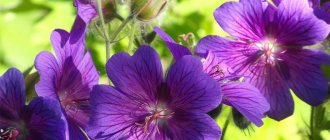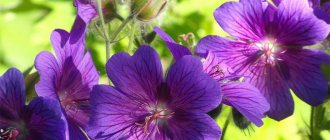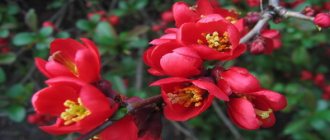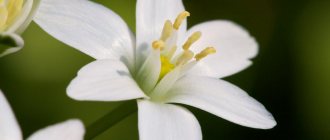Every gardener grows various flowers in his flower beds: perennials, annuals, tuberous, bulbous. They fill gardens with rich fragrance and bright colors. When thinking through the design of a garden flowerbed, special attention should be paid to chrysanthemums. They will decorate any flower garden in the fall with their abundance of bright colors. It is worth noting right away that chrysanthemums are quite capricious to grow. But if everything is done correctly, they will delight gardeners with abundant flowering until the first frost.
Kinds
Every year new species appear, so there is no clear systematization of them. For planting and caring for garden chrysanthemums in open ground, professionals advise adhering to the following classification:
- By size of flowers, height of shrubs.
- By type of inflorescence.
- According to flowering time.
- Perennial, annual.
Chrysanthemums are large-flowered, do not exceed 1 m 20 cm in height. These are Valentina Tereshkova, Alec Bedser, Gazelle.
Medium-flowered chrysanthemums grow 30-70 cm. Among them are Champagne Spray, Tom Pierce, Eleanor, Naru, Safina.
Small-flowered chrysanthemum grows from 25 to 1 m 20 cm. These include: Mona Lisa, Belyanka, Lady Di, Zolotoloska, Malvina, Mirra. This type of perennial has leaves similar to oak. Many people know it under the name “oak”.
Types of inflorescences found:
- simple: Vivien, Amazon, Pat Joice, etc.;
- and terry: Grace, Broadway, Valli Ruf, Bob, Regalia, Tokyo, Trezor.
Flowering dates: early flowering (Deliana, Handsome, Zembla yellow), mid flowering (Orange, Froggy) and late flowering (Larissa, Avignon, Rivardi).
The types listed above are classified as perennials. Annuals include: Tricolor chrysanthemum (Flammenstahl, Cocarde, Nordstern) and Field (Helios, Tetra comets, Venechnaya).
September, October, November are the time of flowering of this beautiful plant. Looking at a photo of a garden chrysanthemum, you understand that autumn is not a “sad time” at all.
Popular varieties
Today there are more than 150 varieties of chrysanthemums. True, domestic gardeners prefer to grow their hybrids, which are distinguished by their durability, unpretentiousness and beauty. In addition, the care and planting of different varieties of chrysanthemums are practically the same, which greatly simplifies the task of gardeners.
In general, chrysanthemums have a rather complex classification, but the most popular types can be identified:
- Korean - small-flowered chrysanthemums, the size of the inflorescences ranges from 2-9 cm;
- Indian - large-flowered plants with flowers up to 10-25 cm in diameter;
- Japanese;
- Chinese.
In addition, chrysanthemums can have different flower structures. They are:
- semi-double;
- simple;
- terry;
- hemispherical;
- anemone-shaped;
- flat;
- curly;
- radiate;
- pom-pom.
And the leaves of flowers can be reed-shaped or tubular.
In our country, it is advisable to grow beautiful, unpretentious chrysanthemums that bloom for a long time. Large-flowered varieties are used to make bouquets and flower arrangements. But for planting in the garden, it is best to choose a small-flowered variety.
- Korean variety "Alyonushka". It has simple bright purple flowers with a diameter of up to 5-6 cm. Bushes can grow up to half a meter. Alyonushka begins to bloom in September.
- Korean variety "dune". It blooms with yellow-orange inflorescences with a diameter of up to 5 cm. This chrysanthemum can grow up to 60 cm.
- Bush variety "saba". It has very original, unusual colors: the middle of these flowers is green-yellow, and the petals are painted in a red-purple hue with a white edge. Looks amazing. The inflorescences of this variety reach a diameter of 5 cm, and the growth of the bushes is 0.7 m.
- Korean variety "snowball". It has beautiful double inflorescences with a diameter of about 5-6 cm, white with pink tips. Shrubs grow up to 60 cm.
- Korean variety "Mishal". Small-flowered double chrysanthemums, the size of the pompom inflorescences reaches 4-4.5 cm in diameter. The color of the flowers is bright yellow. "Michelle" begins to bloom in September, and its bushes reach a height of 40 cm.
- Korean variety "terracotta". It has double orange inflorescences with a diameter of 5-6 cm. The height of such bushes ranges from 50-60 cm.
As you can see, the choice is quite varied. So you can easily choose a suitable plant for yourself, which will delight you with its beauty and bright colors for almost six months.
Advantages of choosing chrysanthemums
Preferences are due to the wide variety of varieties:
- plants are perennials and annuals - you can make a choice according to your preference: either update the species every year, or grow, care for and help the chrysanthemum survive the winter cold for a long time;
- abundant flowering - chrysanthemums are planted either as a separate bush or as part of a composition. In any case, a bright accent will look very nice in the green area of the site;
- unpretentious - simple rules of care allow even a beginner to use garden chrysanthemum seeds for seedlings to subsequently create a chic flower garden;
- variety of colors - will create the illusion of diversity of cultures in the composition. There are varieties that are very different from each other, and you won’t immediately guess that they are the same chrysanthemum;
- resistance to low temperatures - allows you to decorate the area with your appearance before the onset of frost and allow perennial plants to winter safely.
Description of the plant
Chrysanthemums are herbaceous perennials or subshrubs. There are several hundred species, and even more varieties. Their flowers are small, reed-shaped, tubular. They form standard basket inflorescences, which differ in size, shape and arrangement of tiers. The flowers themselves are simple, semi-double, double.
Advantages of growing chrysanthemums in a summer cottage
The benefits of chrysanthemums include:
- a large selection of varieties and species, which allows summer residents to choose the best option for themselves, which will harmoniously fit into the flower garden. They are planted solo, in groups, in mixborders;
- long flowering period from July to November;
- the presence of beautiful and bright inflorescences that delight owners in all weather conditions;
- ease of reproduction;
- resistance to diseases and pests;
Important : chrysanthemums can withstand various negative environmental factors: heavy rains, sudden temperature changes, lack of sunlight, drought.
Sowing seeds
By the end of spring, when the cold weather ends, depressions are made in the area, moistened with heated water and a few seeds are thrown in. Fill the planting holes with soil and cover with greenhouse film. The distance between future bushes should be kept about 25 cm.
After emergence: remove the film, loosen the soil, weed the weeds, and fertilize after 1-2 weeks. Fertilize with a weak solution of “Ideal” or “Rainbow”.
When the seedlings grow to 7-10 cm, they are thinned out - leaving one strong plant. Removed seedlings can be distributed to neighbors or planted in another place.
Bush babies
Let's move on to a detailed description of the presented varieties, starting with low-growing varieties of chrysanthemums. These babies, called perennial garden bush chrysanthemums, or also multifloras, are the first to open the flowering season.
They are very easy to recognize: up to 30 cm tall and a cap of inflorescences of various colors, located on top of dense bushes with leaves reminiscent of oak. They have many names: bush, border or spherical chrysanthemums.
Sowing seeds for seedlings
The flower is grown in small boxes with a low side. A drainage layer of expanded clay or small brick is laid below. It is recommended to sift the soil, consisting of equal parts of earth, peat and humus, and warm it up at 1300 C. When it cools down, pour it over the drainage.
The seeds of the perennial garden chrysanthemum plant are pressed shallowly into the soil, and the seeds of the annual plant are sprinkled with 0.5 cm of substrate. Then moisten with heated water and cover with film.
Can be placed in an unlit room with a temperature of 22-250 C. Ventilate periodically and do not allow the soil to dry out.
Half a month after the seedlings have pecked, the box is placed in a lighted spot and the film is removed. The cover is not removed immediately, allowing the plants to get used to the surrounding atmosphere: the first day for an hour, then adding more time every day.
Picking seedlings and care
When the seedlings have 3-4 leaves, they should be picked into separate cups. To do this, moisten the soil in the box generously and carefully remove each sprout separately, without injuring the roots. Select strong plants and replant them, then spray them with Epin solution.
The seedlings are placed in a bright, cool place at 16-180 C. They are fed once every half month, and watering is determined as needed.
Sunny flower
Numerous photos of garden chrysanthemum flowers only remotely convey the uniqueness of this plant: for a complete picture, you need to inhale its bitter smell, admire the rays of the sun playing on the petals. It is no coincidence that this regal flower got its name - “golden flower”. Its rich golden color was a distinctive feature of these plants in ancient times.
It was only later that breeders began to experiment with shape and color, and we now admire the results of their work. And in Ancient China and Japan, the “golden flower” was embroidered only on the robes of members of the imperial family and the ruler of the country himself. All others who encroached on this privilege were deprived of their heads. In the 18th century, the triumphal march of garden chrysanthemum across Europe began.
Rules for transplanting into open soil
Regardless of the type and variety of chrysanthemum, the lawn for replanting should be light, warm and not damp, preferably on a hill. The plant negatively tolerates stagnation of liquid in the roots; protection from strong gusts of wind is also necessary. In terms of time, this is the end of May - the beginning of June or in the fall 1-2 months before frost.
The soil needs to be fertile, loamy, with a neutral pH or slightly acidic. IMPORTANT! There should not be an abundance of nutrient impurities in the soil, otherwise, to the detriment of the flowers, only green mass will grow.
Recommendations from gardeners
After planting, caring for chrysanthemums is actually quite simple. It consists in:
- regular watering;
- periodic loosening of the soil;
- weeding;
- periodic spraying with pest control solutions.
Chrysanthemums tolerate cold quite well, but still they also require insulation. Around the end of October, flower beds should be protected from the first frosts using a frame with plastic film stretched over it. Thanks to this shelter, you will be able to watch the beautiful blooming chrysanthemums that you planted in the spring for at least another month. True, at the end of autumn the frame will still have to be removed, and the flowers transplanted into pots and sent to a warm veranda until April.
In general, as you can see, growing chrysanthemums in the garden is not so difficult. To do this you will need a minimum of knowledge, time and effort. And if you are no longer a beginner in gardening, then you can easily cope with this plant. If you previously had an indoor flower bride, caring for a chrysanthemum will not be difficult for you. After all, these plants are very similar to each other. The only difference is that the bride grows in a pot, and the chrysanthemum loves open ground.
How to plant a chrysanthemum
It is best to plant in the ground on a cloudy, rainy day. Pre-dig a trench. Plant, keeping a distance of about half a meter from each other. For better rooting, water with Kornevin solution. It is also recommended to pinch the growing point.
After all manipulations, cover the seedlings with covering material. In such an atmosphere, the chrysanthemum will take root well and begin to grow. When it grows noticeably, remove the material.
Propagation by cuttings
In the spring, when the air warms up to 20-250 C, cut cuttings from a large bush with a sterilized knife. The stems are cut from the root, not the side, a few mm above the leaf bud. The cuttings are chosen 60-70 cm long.
You can use cuttings from a bouquet in a vase. Break the side shoot with the “heel”; if there is a flower, get rid of it.
After cutting or breaking a branch, keep it in a weak solution of manganese for 15 minutes and place it in Kornevin’s solution. The cuttings from the bouquet remain in Kornevin until the roots appear. Plant cuttings from the bush in nutritious soil or perlite.
When rooting, the plant should be in a well-lit place with a temperature of 15-180C. If the conditions are met, roots will appear by the end of the month. When the roots grow 1-2 cm, for subsequent cultivation, the cuttings are transplanted to an open lawn and covered until they gain strength.
For what reasons is there no flowering in the garden?
Why doesn't chrysanthemum bloom outside? There may be several reasons for this. Despite the fact that this flower is a garden and perennial, it does not always feel good outside, and, as a result, does not bloom. What can negatively affect chrysanthemum? This:
- crowdedness;
- wrong location;
- insufficiently nutritious soil;
- abundant watering during the formation of buds;
- diseases.
In addition, the flowering ability of different varieties of flowers is not the same. Perhaps the climate is simply not suitable for a certain flower. Let's consider all the reasons separately, as well as ways to eliminate them.
Watering, fertilizing, replanting
Water the chrysanthemum generously and regularly with settled water, ideally rainwater. By adding 1-2 drops of ammonia per liter, you will fertilize the water. It is necessary to water right up to the root without touching the leaves. Then loosen the soil and remove weeds.
The bushes are systematically fertilized - at least 3-4 times per season. During development, ammonia nitrogen is needed to enlarge and strengthen the green part. To improve flowering, feed with potassium and phosphorus when the buds appear.
The liquid substrate is poured under the root a day after watering. The first feeding is done one and a half months after planting the seedlings in an open area. Bird droppings or burnt cow manure are used as organic matter.
After 3 years, the chrysanthemum needs to be replanted. Otherwise, she will weaken and begin to hurt. This procedure is carried out simultaneously with dividing the bush.
Preparing for winter
Before the winter cold, perennial plant varieties are fertilized with a potassium-phosphorus solution at the beginning of autumn. After the onset of frost, the above-ground part is cut off, leaving about 15 cm, hilled up and covered with dry leaves up to half a meter thick. It is advisable to add brushwood for shelter. The main thing is that air must pass so that the plant does not begin to rot.
Some varieties are removed from the ground for the winter, placed in a separate container and moved to a bright, cool room with a humidity of about 80%. Or they are dug out and stored in the cellar.
Neighborhood in a flowerbed with other flowers
Depending on the chosen variety, chrysanthemums bloom at the beginning of summer, in the middle, or at the beginning of autumn, and continue until the first severe frost. They begin to bloom in mid-summer. Chrysanthemums look very beautiful in mixboards with asters, sedum, rudbeckia, echinacea, and ornamental cereals. They are also planted against the backdrop of evergreen ornamental shrubs.
Diseases, pests
With dense, unkempt plant thickets, fungal diseases may appear: Powdery mildew, Verticillium wilt, Rust.
Sometimes viral diseases affect: Aspermia, Dwarfism, Mosaic. The diseases are incurable and it is better to get rid of the affected plant.
The most malicious pests: nematodes, aphids, meadow bugs, as well as snails and slugs.
To prevent such misfortunes, you need to monitor the plant, care for it, adhering to the rules, inspect the bushes, do not allow harmful insects to attack the flowers, and use only sterile instruments for dividing. Carry out prevention during replanting of bushes or after digging.
Love the plant, care for it, follow the growing rules, and the chrysanthemum will respond to you with healthy, lush blooms that will delight you for many years.











